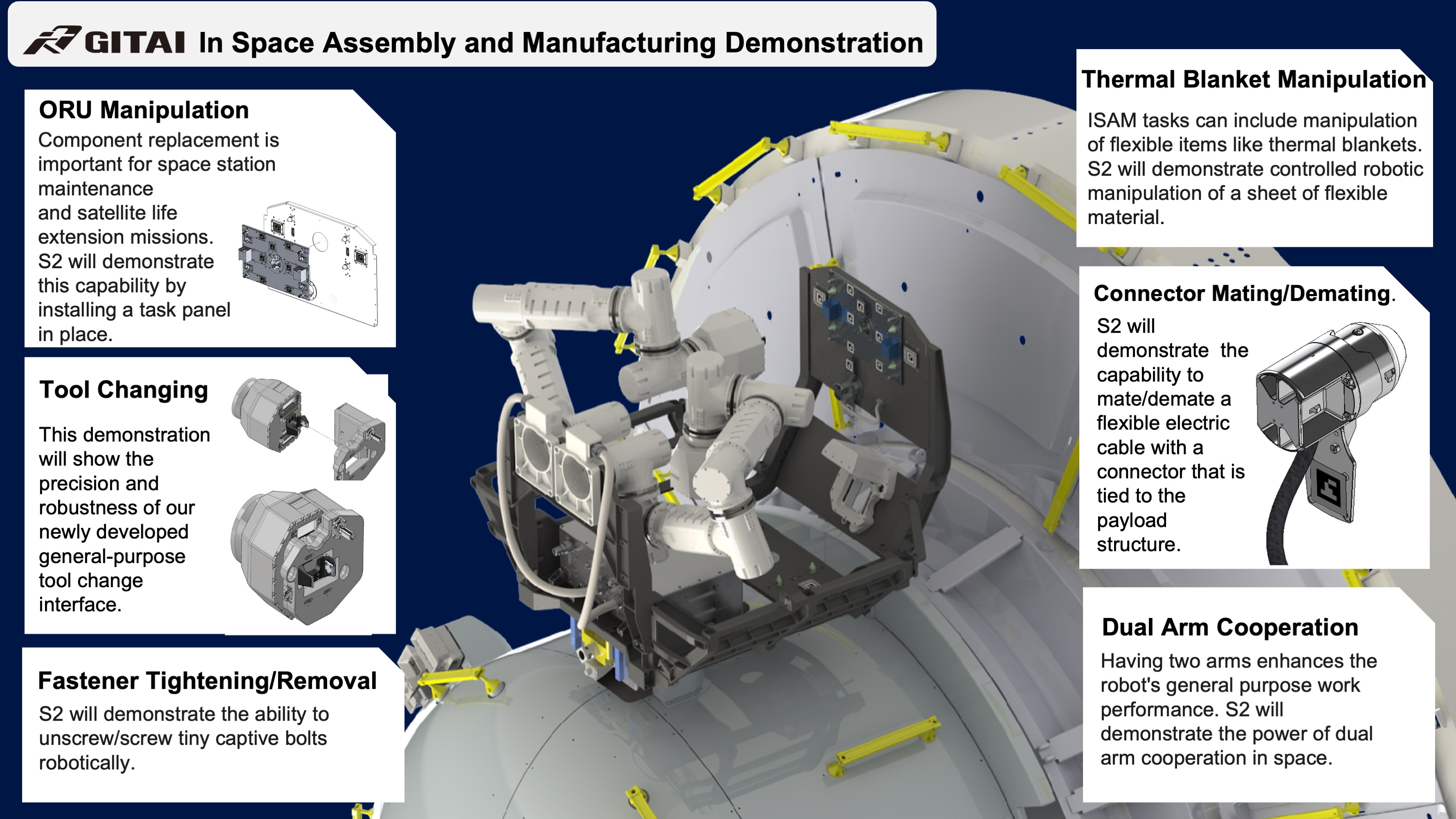Los Angeles-based Gitai said Tuesday that its autonomous robotic arm has nailed a tech demonstration outside the International Space Station.
Gitai CEO Sho Nakanose told TechCrunch in an interview last year that the company aims to reduce in-space labor costs by 100 times, in the same way that SpaceX and other providers have dramatically reduced launch costs. Autonomous robotic systems still have a ways to go before they render human labor obsolete, especially here on Earth; but in space, human labor is expensive (and dangerous), which provides an opening for a robotic alternative.
The 1.5-meter autonomous robotic arm, which the startup calls S2, launched to the ISS aboard a SpaceX Falcon 9 in January. It was mounted externally on Nanoracks’ Bishop Airlock before completing a series of tasks that will all be essential for building out structures to live and work in space. These included installing a task panel, screwing and unscrewing tiny bolts, manipulating flexible material and attaching and detaching a flexible electric cable to a connector.

Image Credits: Gitai
In the nearer term, the company is targeting on-orbit satellite servicing for spacecraft in low Earth orbit and geostationary orbit. Gitai is also developing robotic satellites capable of performing tasks related to this market, such as rendezvous, docking, inspection and de-orbiting, they said in a statement.
The eight-year-old startup plans to start offering on-orbit servicing in 2026. The arm’s technology readiness level (TLR), a standard used by NASA to chart the maturity of technology, is now at 7, the highest level, Gitai said. The startup’s other product, an “inchworm-type” arm, is also at a TRL 7.
